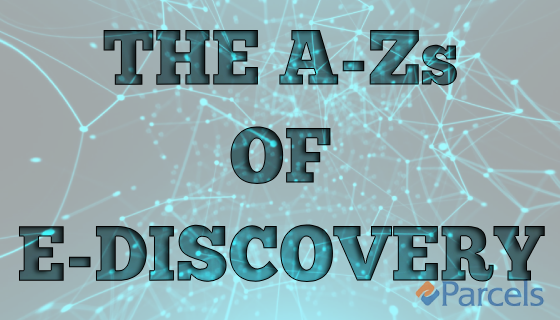
Staying up to date on all things eDiscovery can be a taxing process. You’ll often find yourself having to look up many industry-specific terms and acronyms to get a deeper understanding of them. With our blog series, The A-Z’s of eDiscovery, we wanted to share with you those need-to-know eDiscovery terms to make your life a little bit easier. So, next time you read about or discuss eDiscovery, you won’t need to look up a term — you’ll already know it!

Unicode: The unicode system is the standard method that establishes a uniform representation of character sets for all languages. It is also referred to as a double-byte language. Catalyst Secure has an example of how to say “hello” using the unicode method.
Unitization: Unitization is the process of splitting image files that were received in multiple page formats down into individual “documents.” To get a better understanding of unitization, this blog by Fox Rothschild breaks the term down into physical and logical unitization.
Unstructured Data: This data is made up of the work completed every day in organizations around the world. Text and multimedia files (web pages, videos, audio files, videos) that lack the ability to be organized within the usual row-column database is considered unstructured. This includes emails, word processing documents, PowerPoint slide decks, etc.

Value: The utility or business purpose of specific information. This emphasizes that an organization has an interest in information proportional to the value it offers – the degree to which it helps drive the “profit” or purpose of the enterprise itself. To learn more about our added value at Parcels, check out the “About” section on our website.
Vendor: Vendors provide services that you may need or may not be able to do. We at Parcels, Inc. are a great example of an eDiscovery vendor in the legal industry. Need us? Contact us.
Vendor-Added Metadata: Data created and maintained by the electronic discovery vendor as a result of document processing. While some vendor-added metadata has direct value to customers, much of it is used for process reporting, chain of custody, and data accountability. Unsure about what metadata is? Check out our blog post about it.

Website: You’re on one right now! A website is a collection of uniform resource identifiers (URIs), including URLs (uniform resource locators), that control one administrative entity. It may include different types of URIs (i.e., file transfer protocol sites, telnet sites), as well as world wide web sites.
Workflow: The stream of information processing through an organization. Although the concept is similar across organizations, each entity will establish a workflow unique to them.

Zip: An algorithm used to compress large, archived files into a single file, taking up less storage space. You increase the space on your laptop by utilizing zip files.
As our series comes to an end, our hope is that you will now be able to recall many more eDiscovery terms and are capable of incorporating them into your everyday vocabulary. And, if you’re still having some trouble remembering a few terms, bookmark this blog post (and the others) to utilize as a quick reference. Happy reading!
Need to catch up? The A-Z’s of eDiscovery: A-D || The A-Z’s of eDiscovery: E-L || The A-Z’s of eDiscovery: E-L
< Return to News